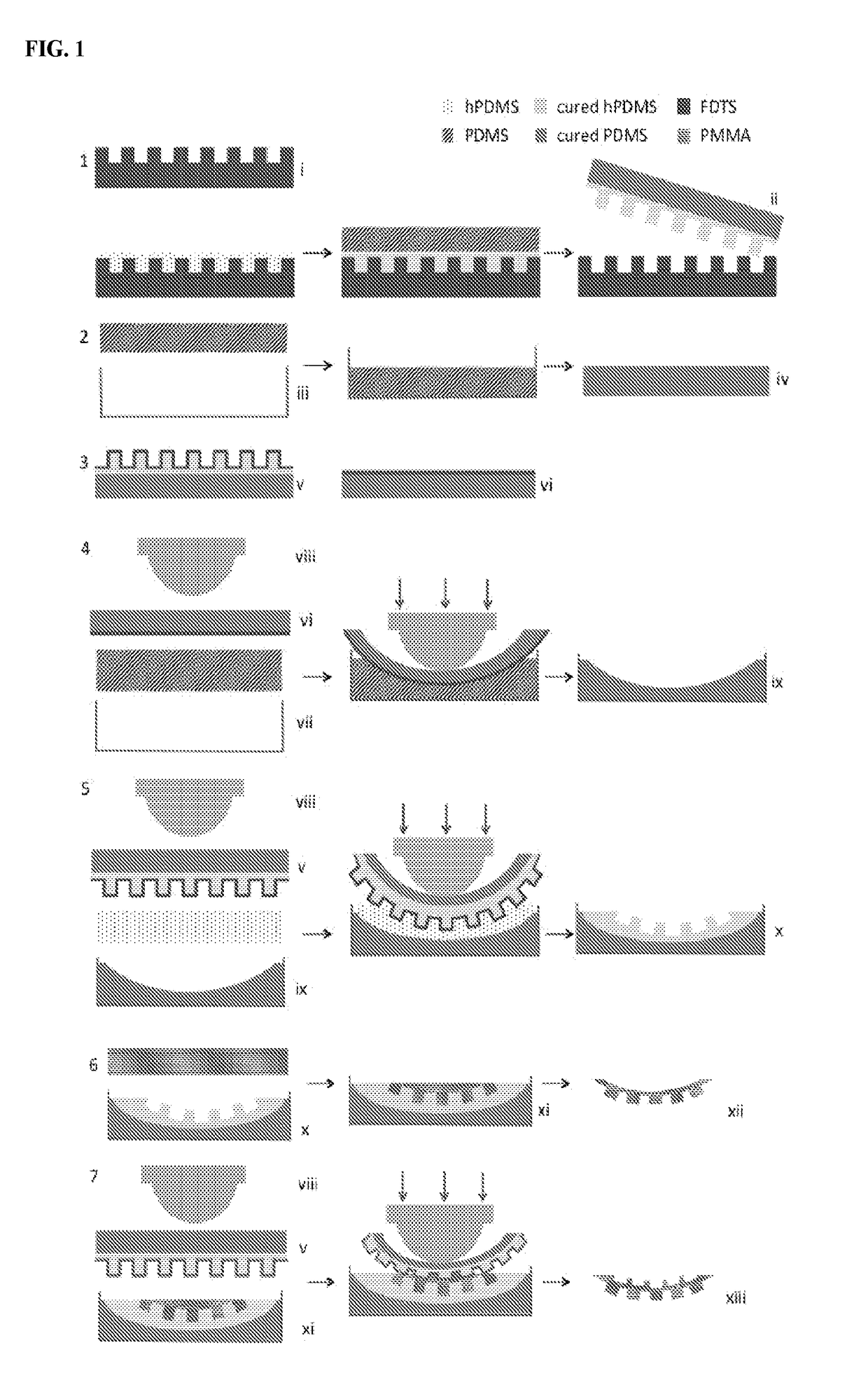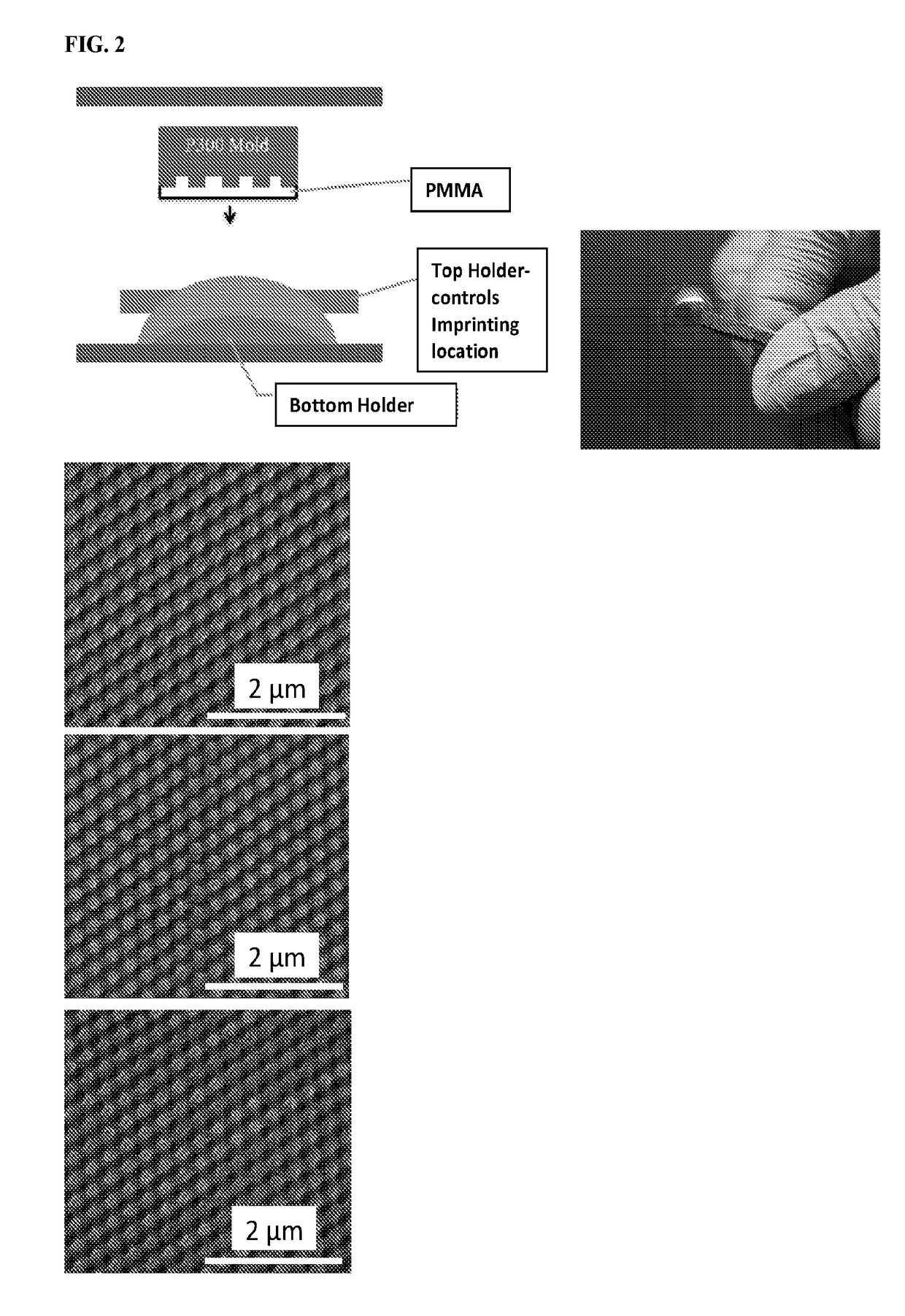Fabrication of nano-structures on multiple sides of a non-planar surface
a nano-structure and non-planar surface technology, applied in the field of medical devices, can solve the problems of existing technologies methods were limited, existing technologies are not geared towards devices, etc., and achieve the effect of preventing the proliferation of microorganisms and increasing or reducing cell motility
- Summary
- Abstract
- Description
- Claims
- Application Information
AI Technical Summary
Benefits of technology
Problems solved by technology
Method used
Image
Examples
example 1
Method of Making a Curved Patterned Surface
[0037]FIG. 1 illustrates one embodiment of the process of making a curved nano-structured polymer surface. In this embodiment, to make a curved patterned surface, the pattern is replicated onto a planar elastomer mold with soft lithography. Elastomers include silicone and polyurethane elastomers. A polymer precursor solution is applied into the curved elastomer mold. This results in a curved nanostructured polymer surface.
[0038]Referring to FIG. 1, in step 1, a hard mold (i) with nano-pillars with 300 nm periodicity was provided. The pillars were 190 nm in diameter and 300 nm in height. High modulus polydimethyl siloxane (hPDMS) was pipetted onto (i) and left at room temperature for 1.5 hours then cured at 65° C. for 0.5 hour. After the hPDMS was cured, polydimethyl siloxane (PDMS) prepolymer was poured on top and cured at 80° C. for one hour. After PDMS was cured, the planar silicone mold (ii) was demolded.
[0039]In step 2 of FIG. 1, PDMS w...
example 2
Curved PMMA Lens
[0043]FIG. 2 illustrates one embodiment of the disclosure, describing a schematic of the process for making a curved poly-methylmethacralyte (PMMA) lens with nanostructures. In this embodiment, the inventors created a method for transferring a nanostructured polymer thin film to a curved polymer surface.
[0044]An elastomeric mold with the nano sized cavities, the negative of the desired structures, was fabricated (P300 Mold). Then the polymer solution was spin-cast onto the elastomeric negative mold such that it infiltrates the nano sized cavities and creates a residual layer on the elastomer surface. In this example, 5% (by weight) PMMA in toluene was used as the polymer solution. Finally, a curved piece of the same polymer was placed inside a holder and under heat and pressure. This process conformed the elastomer mold to the curved polymer piece. In some embodiments, if the temperature is at or above the glass transition temperature of the polymer, wetting might oc...
PUM
| Property | Measurement | Unit |
|---|---|---|
| Pressure | aaaaa | aaaaa |
| Microstructure | aaaaa | aaaaa |
Abstract
Description
Claims
Application Information
 Login to View More
Login to View More - R&D
- Intellectual Property
- Life Sciences
- Materials
- Tech Scout
- Unparalleled Data Quality
- Higher Quality Content
- 60% Fewer Hallucinations
Browse by: Latest US Patents, China's latest patents, Technical Efficacy Thesaurus, Application Domain, Technology Topic, Popular Technical Reports.
© 2025 PatSnap. All rights reserved.Legal|Privacy policy|Modern Slavery Act Transparency Statement|Sitemap|About US| Contact US: help@patsnap.com


